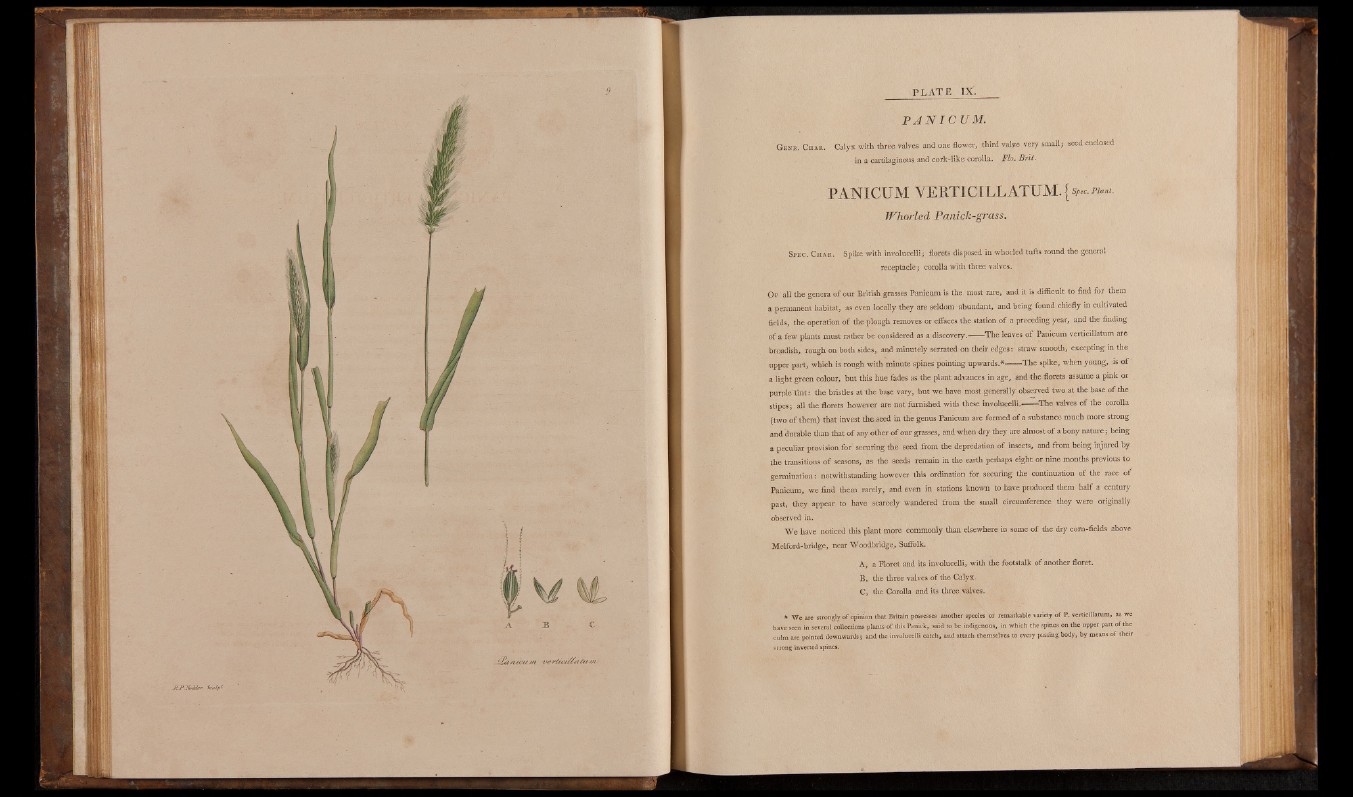
PA N I CUM.
Gene. C h a r. Calyx with three valves and one flower, third valve very small; seed enclosed
in a cartilaginous and cork-like corolla. Flo. Brit.
PANICUM VERTICILLATUM. {spec. fU
Whorlcd Paniclc-grass.
Spec. Char. Spike with involucelli; florets disposed in whorled tufts round the general
receptacle; corolla with three valves.
O f all the genera of our British grasses Panicum is the most rare, and it is difficult to find for them
a permanent habitat, as even locally they are seldom abundant, and being found chiefly in cultivated
fields, the operation o f the plough removes or effaces the station o f a preceding year, and the finding
of a few plants must rather be considered as a discovery.------The leaves o f Panicum verticillatum are
broadish, rough on both sides, and minutely serrated on their edges: straw smooth, excepting in the
upper part, which is rough with minute spines pointing upwards.*------The spike, when young, is of
a light green colour, but this hue fades as the plant advances in age, and the florets assume a pink or
purple tint: the bristles at the base vary, but we have most generally observed two at the base o f the
stipes; all tire florets however are not furnished with these involucelli.------The valves of the corolla
(two o f them) that invest the seed in the genus Panicum are formed o f a substance much more strong
and durable than that of any other of our grasses, and when dry they are almost of a bony nature; being
a peculiar provision for securing the seed from the depredation of insects, and from being injured by
the transitions of seasons, as the seeds remain in the earth perhaps eight or nine months previous to
germination: notwithstanding however this ordination for securing the continuation of the race of
Panicum, we find them rarely, and even in stations known to have produced them half a century
past, they appear to have scarcely wandered from the small circumference they were originally
observed in.
We have noticed this plant more commonly than elsewhere in some of the dry corn-fields above
Melford-bridge, near Woodbridge, Suffolk.
A, a Floret and its involucelli, with the footstalk of another floret.
B, the three valves of the Calyx.
C, the Corolla and its three valves.
* "We are strongly of opinion that Britain possesses another species or remarkable variety of P. verticillatum, as we
have seen in several collections plants of this Panick, said to be indigenous, in which the spines on the upper part of the
culm are pointed downwards; and the involucelli catch, and attach themselves to every passing body, by means of their
strong inverted spines.